| Early Spring Date: | April 21 |
| Late Spring Date: | May 26 |
| Best Dates to See in Spring: | April 29 - May 16 |
Orchard Oriole
Icterus spurius
| Infrequently Seen |
Spring: Baltimore Orioles are seen every spring at Monticello Park, but not in significant numbers. They breed in the Washington metro area, but not at Monticello. The best time to see one at the park is during the first two weeks in May. Orchard Orioles also breed in the Washington area, but few visit Monticello. During the breeding season, you can see both oriole species near the Potomac River around Belle Haven and Dyke Marsh.
Fall: During fall migration, very few Baltimore Orioles have been recorded at Monticello; in many years, none have been found. An Orchard Oriole has never been recorded at Monticello during the fall.
Where to See Them in the Park
Baltimore Orioles usually stay in the canopy. They can be difficult to find among the leaves, even when singing. Orchard Orioles tend to stay from mid-story to the canopy, and they sometimes will go into the stream.
Physical Descriptions
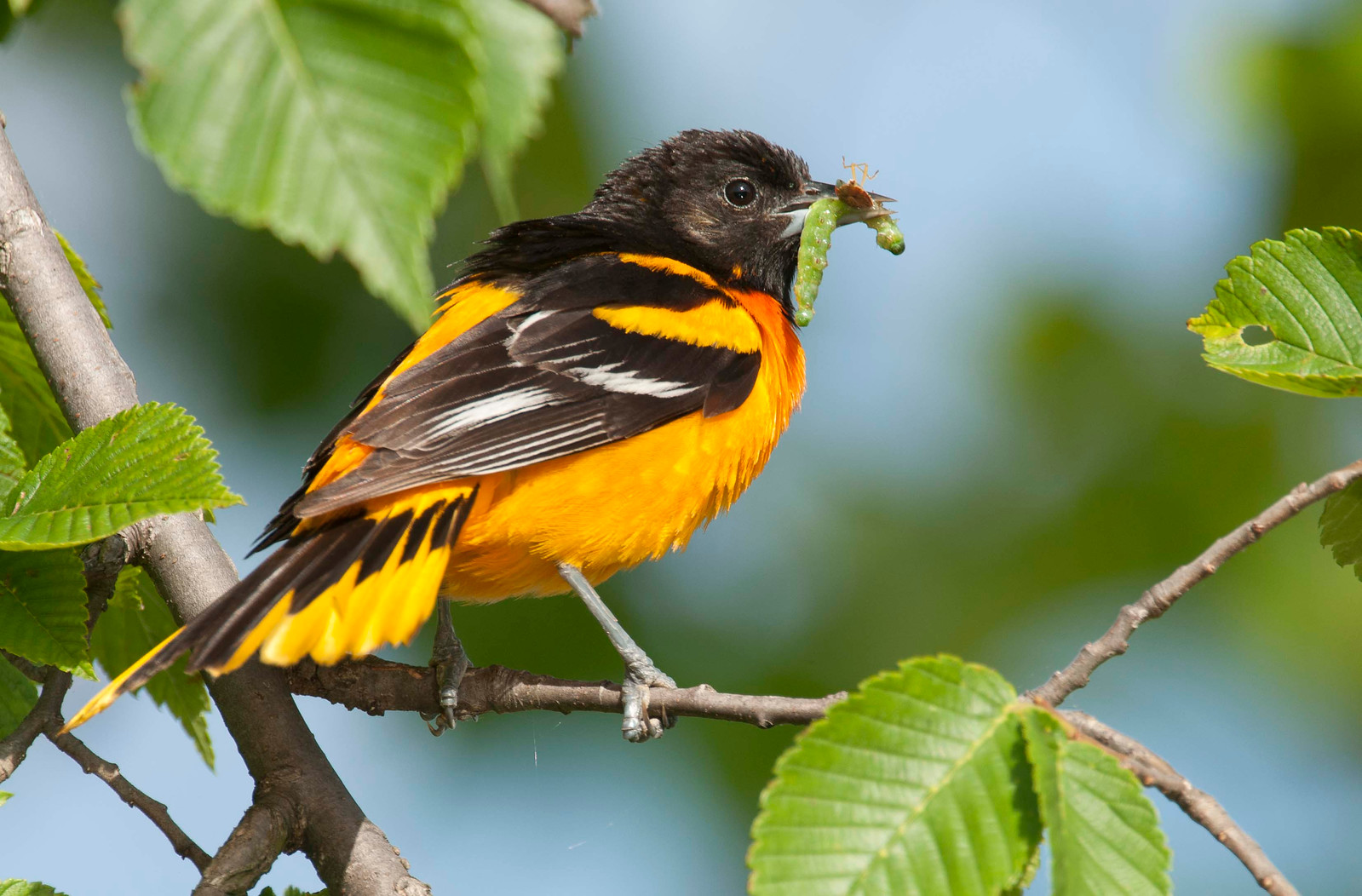

Adult male Baltimore Orioles are unmistakable in the spring. They are bright orange with a black head and back. They have a large, triangular gray bill. The wings are black with a white wingbar and other white feathering. They sometimes bathe in the stream, splashing around and getting very wet.
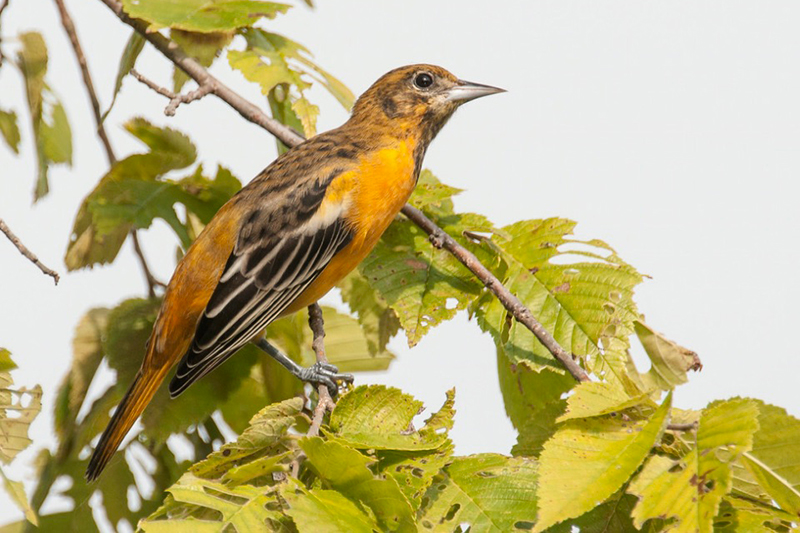
Adult females look like a faded version of the male. The underparts are brownish-orange instead of bright orange. A lot of the head and back plumage is brownish or mottled instead of jet black. The wings of the female are similar to the male's, but duller.
Fall: First-fall male Baltimore Orioles look like drab adult spring females, and first-fall females are even drabber.
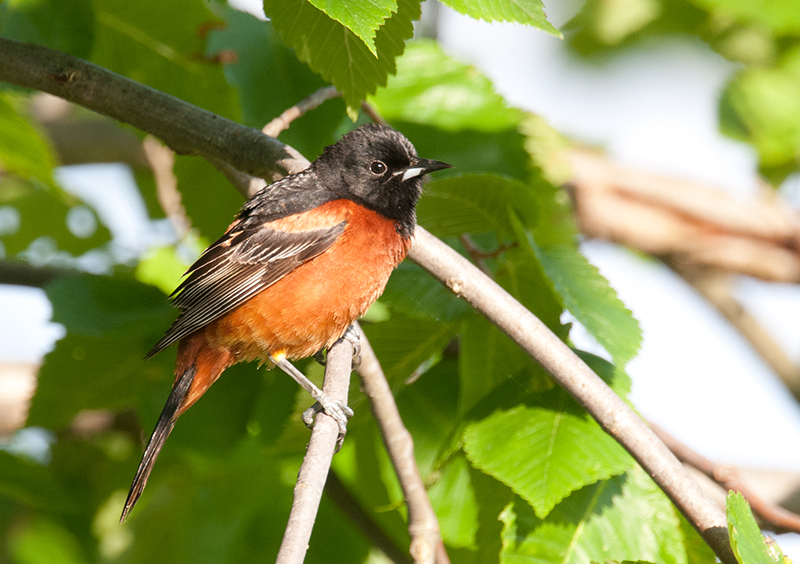
Orchard Orioles are about 20 percent smaller than the Baltimore. The bill is shorter, and the wingbars are not as prominent. The adult male Orchard Oriole's head and back are black, while the underparts are deep chestnut.
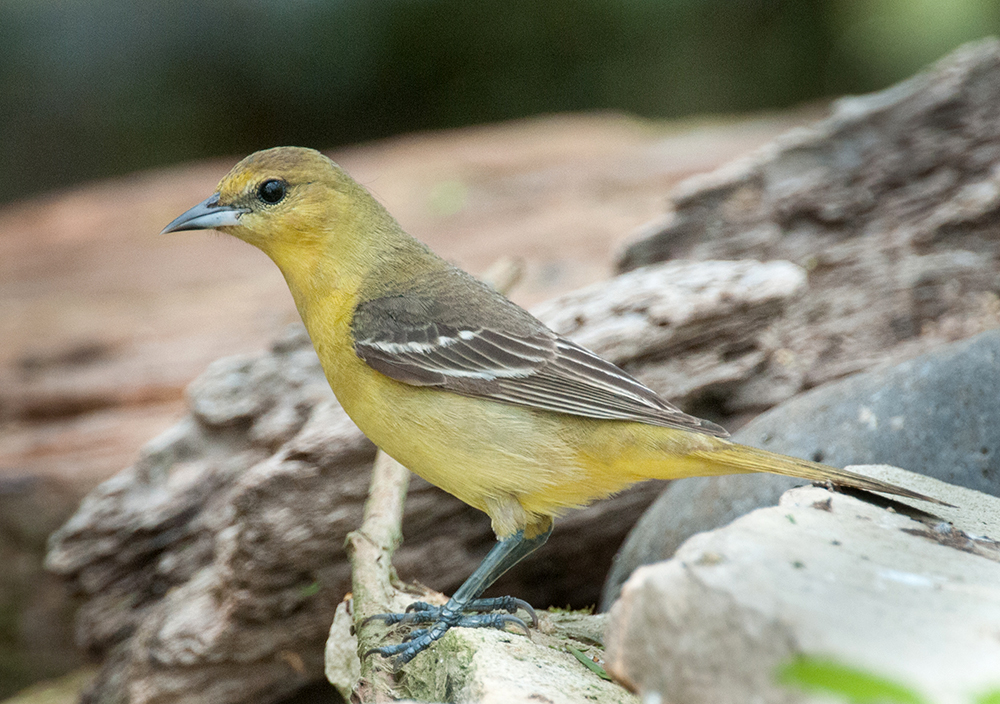
Female Orchard Orioles are dull yellow-green with gray wings. Because they do not have any prominent fieldmarks to differentiate them from many other plain-looking birds, you need to look at features such as size, bill shape, and body shape.
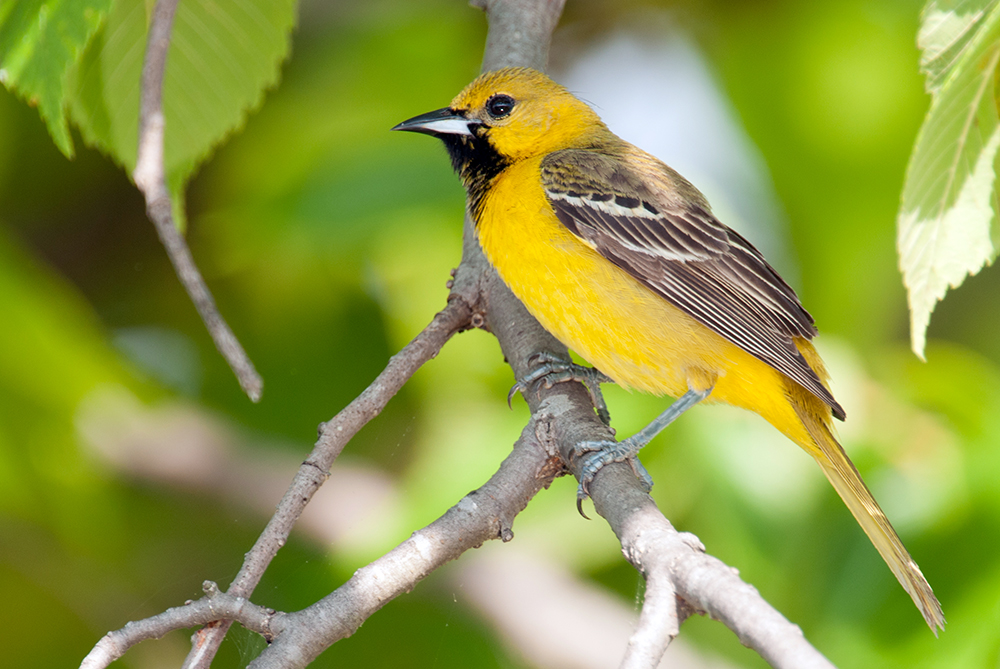
Immature male Orchard Orioles are easier to identify than the females. They are yellower and have a black throat.
Vocalizations
The vocalizations of the two orioles are not alike. The Baltimore Oriole's song is a flutelike whistle. It sounds as if the bird is practicing a song, stopping, and then trying the song again. Baltimore Orioles have a large repertoire of songs to practice, so learning the tonal quality is more important than learning individual phrases. They often sing in the canopy, where it is easier to hear them than to see them. The Orchard Oriole sounds like a House Finch whose long warbled song has harsh notes interspersed.
Hear the vocalizations of the Baltimore Oriole.
Hear the vocalizations of the Orchard Oriole.
Notes
Baltimore and Orchard Orioles are in the same family as the New World blackbirds, and they are not related to either the orioles or blackbirds in the Old World. The Baltimore Oriole is the state bird of Maryland. It became administratively extinct in 1973 when it was lumped with a western species called the Bullock's Oriole and called the Northern Oriole. It became a full species again in 1995. The Baltimore Oriole is the only bird species whose full name is the name of a major league sports team. Other teams have bird nicknames, such as the St. Louis Cardinals and Atlanta Hawks, but no other bird nickname combines with a city name to form an existing species. The name of the Orchard Oriole is also special. North American bird banders use four-letter codes for each species they process. For birds with two-word names, the codes are usually the first two letters of the first word and the first two letters of the second. For example, the code for Mourning Dove is MODO. The Orchard Oriole is the only two-named species who visits Monticello whose banding code has the same two letters repeated — OROR. The only other North American species with a repeating banding code is a blackbird with a one-word name — the Bobolink, whose code is BOBO.
Origin of Names
Common Names: Baltimore because orange and black were the colors of the Baltimores, who were proprietors of colonial Maryland. Orchard because orchards are one of their preferred habitats. Oriole from the Latin word aurum, meaning gold. The New World orioles look like the European Oriole, who is yellow but not in the same family.
Genus Name: Icterus means jaundice, from the yellowish plumage of some blackbirds.
Species Names: Galbula means small yellow bird. Spurius means false or fake. Orchard Orioles were once known as Bastard Baltimore Orioles, based on someone wrongly identifying a female Baltimore Oriole as an Orchard Oriole.
Baltimore Oriole video footage
Orchard Oriole video footage
Return to the Index
